
Theta Tau (ΘΤ) is a professional engineering fraternity. The fraternity has programs to promote the social, academic, and professional development of its members. Theta Tau is the oldest and largest professional engineering fraternity and has a membership of more than 50,000 men and women who study engineering in all its various branches on over 100 college campuses.
Dartmouth College is host to many fraternities and sororities, and a significant percentage of the undergraduate student body is active in Greek life. In 2005, the school stated that 1,785 students were members of a fraternity, sorority, or gender-inclusive Greek house, comprising about 43 percent of all students, or about 60 percent of the eligible student body. Greek organizations at Dartmouth provide both social and residential opportunities for students and are the only single-sex residential option on campus. Greek organizations at Dartmouth do not provide dining options, as regular meal service has been banned in Greek houses since 1909.

St. Anthony Hall or the Fraternity of Delta Psi is an American fraternity and literary society. Its first chapter was founded at Columbia University on January 17, 1847, the feast day of Saint Anthony the Great. The fraternity is a non–religious, nonsectarian organization. In 1879, William Raimond Baird's American College Fraternities characterized the fraternity as having "the reputation of being the most secret of all the college societies." A modern writer says the fraternity is "a cross between Skull and Bones and a Princeton eating club, with a large heaping of Society and more than a dash of Animal House." Nearly all chapters of St. Anthony Hall are coed.

The Sigma Phi Society (ΣΦ) is the second Greek fraternal organization founded in the United States and the first to establish a chapter at another college, making it the first national Greek organization.
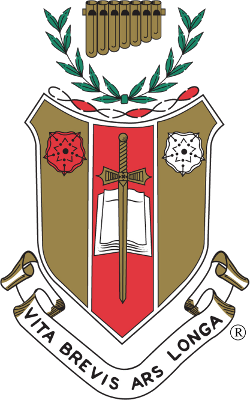
Sigma Alpha Iota (ΣΑΙ) is an international music fraternity. Formed to "uphold the highest standards of music" and "to further the development of music in America and throughout the world", it continues to provide musical and educational resources to its members and the general public. Sigma Alpha Iota operates its own national philanthropy, Sigma Alpha Iota Philanthropies, Inc. Sigma Alpha Iota is a member of the National Interfraternity Music Council and the Professional Fraternity Association.
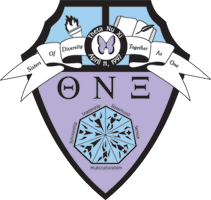
Theta Nu Xi Multicultural Sorority, Inc. (ΘΝΞ) is a historically multicultural sorority founded on April 11, 1997, at the University of North Carolina at Chapel Hill (UNC), by seven women who sought to bridge cultural gaps. Theta Nu Xi was incorporated on April 29, 1999.

Over 8,000 undergraduate and graduate students live in campus housing at the University of North Carolina at Chapel Hill during a regular school year. Forty residence halls are grouped into 16 residential communities across campus.
Beta Theta Pi Fraternity House may refer to:

Fraternities and sororities at the University of Virginia include the collegiate organizations on the grounds of the University of Virginia in Charlottesville, Virginia. First founded in the 1850s with the establishment of several fraternities, the system has since expanded to include sororities, professional organizations, service fraternities, honor fraternities, and cultural organizations. Fraternities and sororities have been significant to the history of the University of Virginia, including the founding of two national fraternities Kappa Sigma (ΚΣ) and Pi Kappa Alpha (ΠΚΑ).
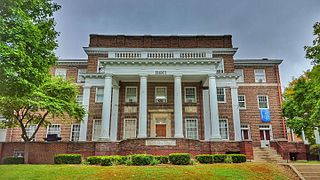
The Beta Theta Pi Fraternity House was a historic fraternity house located at the University of Illinois at Urbana–Champaign in Champaign, Illinois. The building was added to the National Register of Historic Places on August 28, 1989. It was demolished in October 2020.

The Delta Kappa Epsilon Fraternity House was a historic fraternity house located at the University of Illinois at Urbana–Champaign in Champaign, Illinois. It was built in 1906 and was used by various fraternities and sororities before being demolished in 2020.
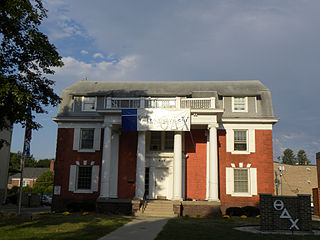
The Colonials Club House, also known as the Beta Deuteron Charge House of Theta Delta Chi, is a historic building located in Ames, Iowa, United States. The building was significant in the development of the city's Fourth Ward. It was listed on the National Register of Historic Places in 2012.

Phi Epsilon Kappa (ΦΕΚ) is a national professional fraternity for persons engaged in or pursuing careers in the fields of physical education, health, recreation, dance, human performance, exercise science, sports medicine and sports management.
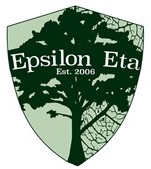
Epsilon Eta (ΕΗ), also known as Ep Eta, is an American professional gender-inclusive fraternity for students interested in careers in environmental science and sustainability. Founded in 2006 at the University of North Carolina at Chapel Hill, it is the first nationwide environmental fraternity in the United States. The fraternity has grown to include chapters across the United States. There is no national organization as of October 2023.
Phi Alpha Pi (ΦΑΠ) is a local fraternity at the University of Olivet in Olivet, Michigan. It was established as a literary society in 1861 and became a traditional social fraternity in 1887. It is the oldest social and literary fraternity at Olivet College.















